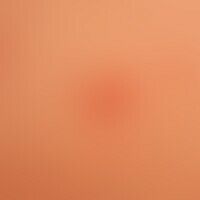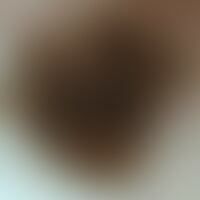Image diagnoses for "Torso"
563 results with 2198 images
Results forTorso

Contagious mollusc B08.1
Molluscum contagiosa: multiple, 0.2-0.3 cm large, yellow-reddish, firm, shiny, completely asymptomatic nodules with characteristic central umbilical cord; appearing after first school swimming.

Solar dermatitis L55.-
Dermatitis solaris: painful erythema and blistering, clearly marked on sunlight-exposed areas. Skin peels off in stripes. This was preceded by several hours of sun exposure.

Vitiligo (overview) L80

Nevus spitz D22.-
Naevus Spitz: rapidly growing, irregularly pigmented tumor on the knee of a 5-year-old girl.
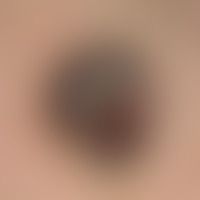
Melanoma cutaneous C43.-
melanoma malignes "type primary nodular melanoma": advanced nodular malignant melanoma. black nodule known for several years with increasing thickness growth. in the last half year faster growth. repeated wetting and bleeding of the surface.

Hyperpigmentation L81.89
Physiological tanning by solarium, reduced pigmentation at the contact points.

Extrinsic skin aging L98.8
Chronic light damage: poikiloderma after years of excessive UV exposure, including hyperpigmentation, depigmentation and numerous precanceroses of the actinic keratosis type.

Acanthosis nigricans (overview) L83
Acanthosis nigricans: Bilateral greyish-brown, papillomatous-hyperkeratotic, asymptomatic, flat, rough plaques in a 40-year-old obese African-American patient.

Drug effect adverse drug reactions (overview) L27.0
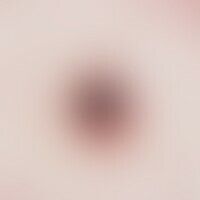
Pyogenic granuloma L98.0
Granuloma pyogenicum (pyogenic granuloma) Rapidly growing, bluish-black, soft, slightly bleeding tumour. Remark: the black colour was caused by thrombosis in the tumour parenchyma.

Sarcoidosis of the skin D86.3
Sarcoidosis: anular or circulatory chronic sarcoidosis of the skin. persisting for several years. onset with small symptomless papules with continuous appositional growth and central healing. no detectable systemic involvement.
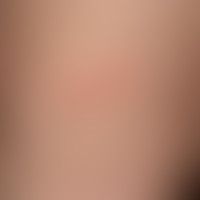
Erythema anulare centrifugum L53.1
Erythema anulare centrifugum: Characteristic single cell lesion with peripherally progressive plaque, which flattens centrally and is only recognizable here as a non raised red spot.

Dermatitis herpetiformis L13.0
dermatitis herpetiformis. multiple, itchy, scratched excoriations on the buttocks of a 15-year-old patient. the scratched excoriations replaced grouped blisters that had appeared a few days earlier. overall, the disease has existed for several months and shows a chronically recurrent course.

Pityriasis rosea L42
Pityriasis rosea: clearly visible primary medallion in the right axilla. the red colour typical of the flock in white skin is completely absent in dark skin.

Inverted psoriasis L40.83
Psoriasis inversa: 69-year-old woman. 6 months at presentation. no manifestations of psoriasis present on the remaining integument. family history but positive: son with known psoriasis vulgaris.

Purpura fulminans D65.x
Purpura fulminans: Purpura fulminans beginning in the abdominal region in the context of E. coli sepsis in a 55-year-old man (lethal outcome).

Zoster B02.9
Zoster: in segmental distribution (Th4), grouped vesicles on reddened skin in a 38-year-old man. Moderate pain. Healing without complications. No postzosteric neuralgia. Here is a detailed picture with fresh grouped vesicles.



